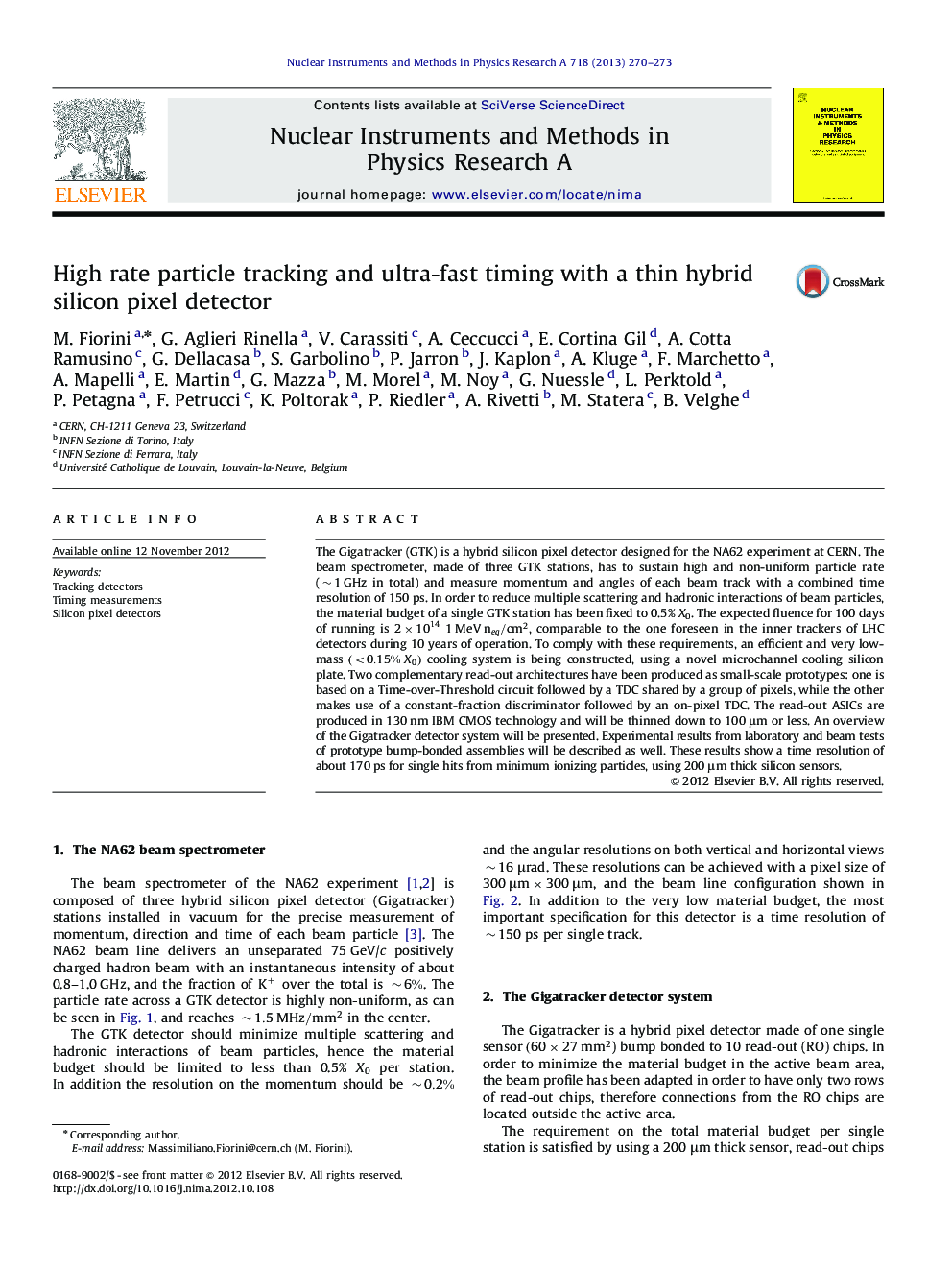| Article ID | Journal | Published Year | Pages | File Type |
|---|---|---|---|---|
| 8179933 | Nuclear Instruments and Methods in Physics Research Section A: Accelerators, Spectrometers, Detectors and Associated Equipment | 2013 | 4 Pages |
Abstract
The Gigatracker (GTK) is a hybrid silicon pixel detector designed for the NA62 experiment at CERN. The beam spectrometer, made of three GTK stations, has to sustain high and non-uniform particle rate (â¼1GHz in total) and measure momentum and angles of each beam track with a combined time resolution of 150 ps. In order to reduce multiple scattering and hadronic interactions of beam particles, the material budget of a single GTK station has been fixed to 0.5% X0. The expected fluence for 100 days of running is 2Ã1014 1 MeV neq/cm2, comparable to the one foreseen in the inner trackers of LHC detectors during 10 years of operation. To comply with these requirements, an efficient and very low-mass (<0.15%X0) cooling system is being constructed, using a novel microchannel cooling silicon plate. Two complementary read-out architectures have been produced as small-scale prototypes: one is based on a Time-over-Threshold circuit followed by a TDC shared by a group of pixels, while the other makes use of a constant-fraction discriminator followed by an on-pixel TDC. The read-out ASICs are produced in 130 nm IBM CMOS technology and will be thinned down to 100μm or less. An overview of the Gigatracker detector system will be presented. Experimental results from laboratory and beam tests of prototype bump-bonded assemblies will be described as well. These results show a time resolution of about 170 ps for single hits from minimum ionizing particles, using 200μm thick silicon sensors.
Related Topics
Physical Sciences and Engineering
Physics and Astronomy
Instrumentation
Authors
M. Fiorini, G. Aglieri Rinella, V. Carassiti, A. Ceccucci, E. Cortina Gil, A. Cotta Ramusino, G. Dellacasa, S. Garbolino, P. Jarron, J. Kaplon, A. Kluge, F. Marchetto, A. Mapelli, E. Martin, G. Mazza, M. Morel, M. Noy, G. Nuessle, B. Velghe,
